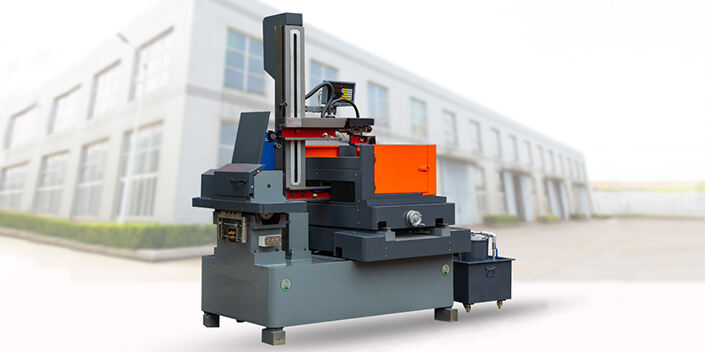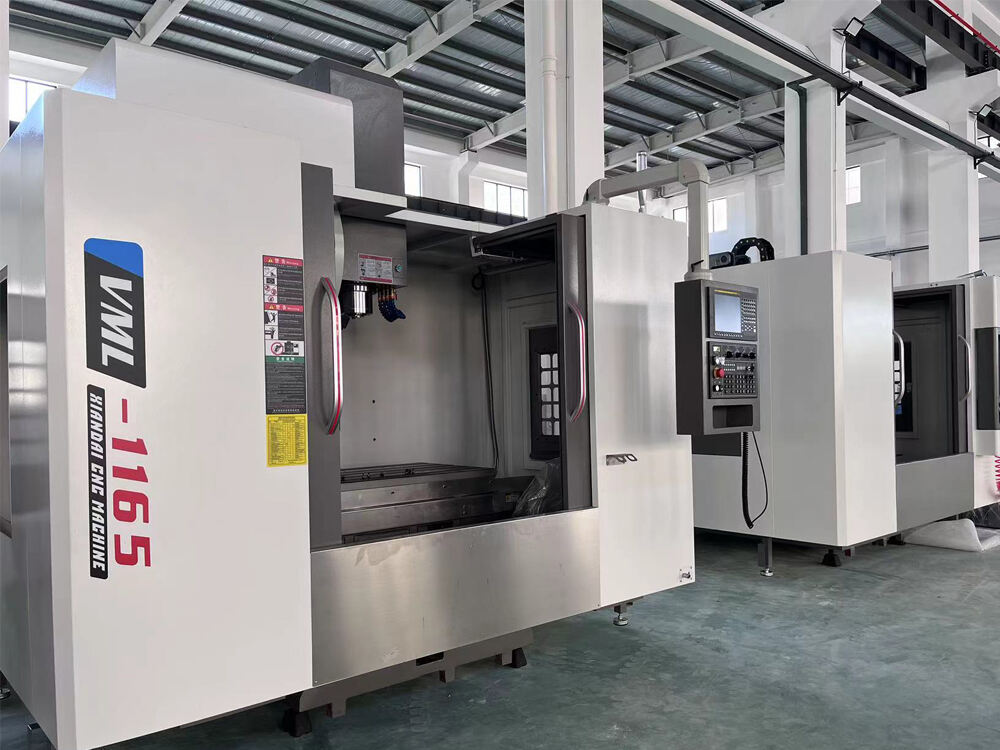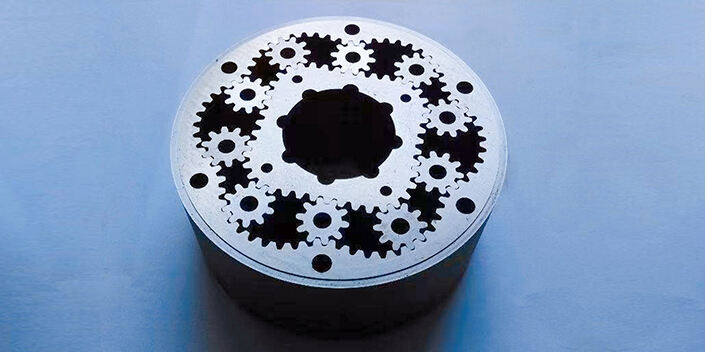Understanding EDM Spark Erosion Technology
The Science Behind Electrical Discharge Machining
EDM stands for Electrical Discharge Machining, and it's basically a pretty advanced way of cutting materials using electricity. What happens is tiny sparks jump between an electrode and whatever metal piece needs shaping, which melts away bits of material bit by bit. The cool thing about this process is how well it handles heat management. Since there's no actual touching going on between tools and workpieces, we avoid those pesky mechanical stresses that usually warp things during regular machining operations. Some studies out there show these machines can get super accurate down to microns level precision too! That kind of accuracy makes EDM really valuable when working on stuff like airplane parts or surgical instruments where even the smallest error just won't cut it.
Key Components of an EDM Machine
EDM machines have multiple key parts working together during the machining process. These include things like the workpiece holder, electrode, power supply unit, and flushing system. Each component has its own specific job to do. The electrode itself is made from materials that conduct electricity well and basically determines what shape the finished product will take. How it's designed and how fast it wears down really affects how accurately the machine works. Then there's the power supply which creates those electrical sparks needed for cutting metal. Operators can adjust settings on this part to control spark frequency and intensity based on what they need. Flushing systems also play a big role by cleaning out debris and keeping everything cool while machining happens. Without proper flushing, both efficiency and precision suffer. All these different parts must work in harmony for EDM machines to perform complex jobs with high accuracy requirements.
Types of EDM Machines Revolutionizing Manufacturing
Wire EDM: Precision Cutting for Complex Geometries
Wire EDM really shines when it comes to precision cutting, especially for those tricky shapes that other methods just can't handle. The process uses a thin wire that's constantly moving through the material, typically brass or some coated version of it, which makes all the difference when working with conductive metals that need tight tolerances. Aerospace companies and toolmakers love this technique because they can create these super detailed parts without wasting much material at all. Some recent research shows that shops using wire EDM cut down on scrap materials significantly compared to traditional methods, plus they get their complex prototypes finished faster than ever before. What makes wire EDM so special is that it actually cuts through materials without touching them directly, which means there's less wear and tear on both the machine and the part being worked on, resulting in consistently good quality end products.
Sinker EDM: Crafting Intricate Molds and Dies
Sinker EDM, sometimes called plunge EDM, has become really important for making molds and dies in various industries. The technique works by using an electrode shaped specifically for the job to cut out cavities or intricate shapes from metal parts. What makes it stand out is how fine details and smooth surfaces can be achieved, something regular machining just cant match. A lot of shops are turning to sinker EDM these days, particularly those working on detailed mold work for cars and gadgets like smartphones. Why? Because it handles complicated geometries and tough materials without breaking a sweat, consistently producing quality parts that meet tight tolerances required in modern manufacturing environments where precision matters most.
Hole-Drilling EDM for Micro-Scale Applications
Hole drilling EDM works best at the micro scale, making those tiny diameter holes needed in tough materials. The technique has become essential across various sectors including medical devices and aerospace engineering, where manufacturers need to punch through strong substances without compromising structural integrity. Compared to traditional methods, this EDM approach delivers much better results while causing far less heat damage around the work area something absolutely necessary when manufacturing intricate parts like the cooling passages inside jet engine turbine blades. Over recent years we've seen some pretty impressive developments in this field too. Manufacturers can now achieve tighter tolerances than ever before, opening up new possibilities for complex designs that previously would have been impossible or prohibitively expensive to produce accurately.
Advantages of EDM Spark Erosion Over Traditional Machining
Zero Contact, Zero Distortion Principle
EDM, or Electrical Discharge Machining, stands out because it cuts material without actually touching it, so there's much less force applied to whatever we're working on. This makes a big difference when dealing with parts that have been heat treated or made really hard through various processes. The lack of physical contact means these sensitive materials don't get distorted or changed structurally during machining. Many engineers who work with this technology point out how important this is for making tiny, intricate parts that need to stay intact throughout the whole process. Some tests show EDM can hold tolerances as tight as 0.0001 inches, which matters a lot in industries where even small errors could be disastrous, such as when manufacturing airplane components or surgical instruments used in hospitals.
Machining Hardened Metals with Sub-Micron Accuracy
EDM tech works really well when it comes to cutting through those tough, hardened metals that give regular tools so much trouble because they just won't break down easily. What makes this method stand out is how it cuts down on tool wear over time, meaning machines last longer and keep producing parts at good speeds. Manufacturers actually get to work with incredible accuracy, sometimes hitting measurements within fractions of a micron, allowing them to build parts where even tiny deviations matter a lot. Looking around different sectors, we see aerospace companies especially turning to EDM more often these days since many aircraft parts need to be made from super strong materials but still fit together perfectly. Defense contractors follow suit too for similar reasons related to component reliability under extreme conditions.
Superior Surface Finish Without Post-Processing
EDM tech generally produces better surface finishes than regular machining methods, which means there's no need for all those extra finishing steps afterward. When parts come out smooth right from the start, companies save money and get products ready faster. Some EDM processes can actually hit surface roughness values as low as Ra 0.2 micrometers. That kind of finish works great for many precision engineering jobs where tight tolerances matter most. Industry professionals point out that cutting down on post-processing does more than just save time it also reduces chances of introducing defects during later stages of production. The fewer steps involved, the less room there is for something to go wrong along the way.
Critical Applications in Precision Industries
Aerospace Turbine Blade Fabrication
In aerospace manufacturing, EDM technology is becoming increasingly important, especially when making turbine blades that need both extreme accuracy and long-lasting materials. What makes EDM so valuable is its ability to create complex cooling channels inside these blades, something traditional methods just can't match. Real-world data shows turbines built with EDM techniques perform much better than older models, thanks to improved casting and molding capabilities. The fine control EDM offers during material removal also means parts can be lighter without sacrificing strength, leading to planes that burn less fuel overall. For companies looking at next generation aircraft design, EDM isn't just an option anymore it's practically essential for pushing past current manufacturing limits while still meeting strict safety requirements.
Medical Device Component Manufacturing
The medical device field has seen major advantages from EDM technology, especially when it comes to making parts that need both extreme accuracy and materials safe for the body. With EDM, manufacturers can actually create those intricate shapes needed for things like bone implants, delicate surgical tools, and various diagnostic equipment. Meeting all those tough regulations in healthcare? EDM helps there too, since it consistently produces parts that pass inspection after inspection. Looking at industry reports, we're seeing more and more hospitals and clinics adopt EDM processes as their go-to method. These highly accurate devices aren't just technically impressive they really do make a difference in how well patients recover from procedures.
Automotive Tooling and Prototyping
EDM tech plays a big role in automotive manufacturing, especially when it comes to making tools like dies and molds needed for car parts. A major benefit of EDM is how it speeds up the prototype process, letting factories try out new designs fast without spending tons on traditional tooling upfront. Some studies point to around a 30 percent boost in what manufacturers can produce once they integrate EDM into their workflows. What makes EDM really stand out though is its ability to handle complicated shapes and details that just aren't possible with other methods. This kind of flexibility helps automakers keep pace with changing customer preferences and stay ahead in the competitive market place, which explains why so many shops continue investing in these specialized machining techniques despite the initial costs involved.
How EDM Enhances Cut-to-Length Line Efficiency
Integrating Wire Discharge Machining in Production Lines
Manufacturers are finding that wire EDM fits right into their production lines when they need to cut materials to specific lengths. The automation aspect means fewer mistakes from workers and faster processing overall. For shops trying to keep up with changing customer needs, this matters a lot. Some real world examples show that companies implementing wire discharge machining typically see around a 20% improvement in how quickly products move through the factory floor. Better speed doesn't just mean faster turnaround though it also helps maintain quality standards across all parts produced. When machines handle the cutting precisely every time, there's less waste and happier customers at the end of the day.
For more details, you can explore case studies and additional insights here.
Optimizing Material Usage in Metal Processing
EDM processes really help cut down on material waste because they reduce chipping and keep scrap to a minimum during cutting operations. What makes this so valuable isn't just saving money either it actually supports greener manufacturing methods by cutting back on what ends up as waste in landfills. Some real world data backs this up too many businesses using EDM technology report around 25 percent less spent on materials thanks to those lower scrap levels. When parts get cut so precisely, factories end up getting way more value from every piece of raw material they work with without having to compromise on quality standards. All these little improvements add up over time, leading to substantial savings on raw materials costs and making entire production systems much more environmentally friendly in the long run.





